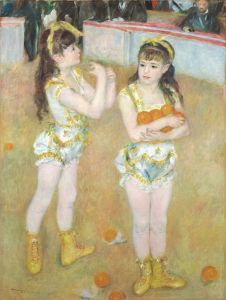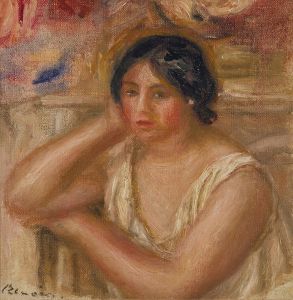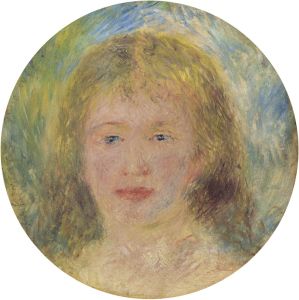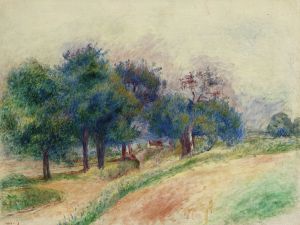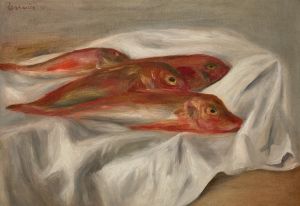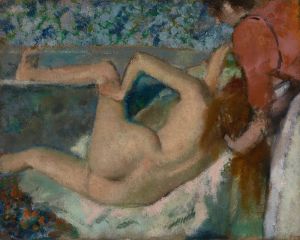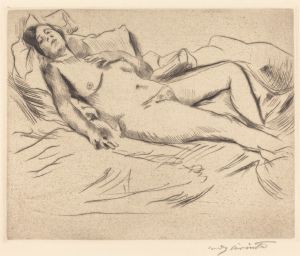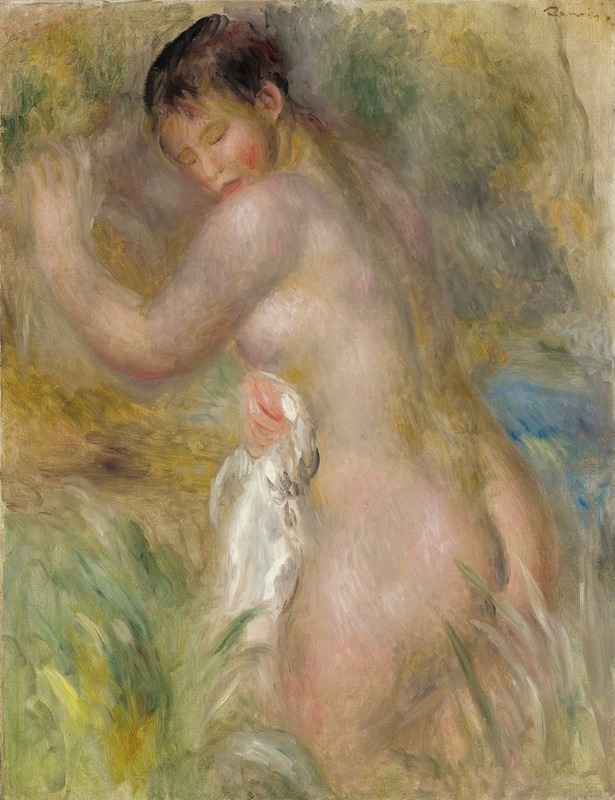
La Baigneuse
A hand-painted replica of Pierre-Auguste Renoir’s masterpiece La Baigneuse, meticulously crafted by professional artists to capture the true essence of the original. Each piece is created with museum-quality canvas and rare mineral pigments, carefully painted by experienced artists with delicate brushstrokes and rich, layered colors to perfectly recreate the texture of the original artwork. Unlike machine-printed reproductions, this hand-painted version brings the painting to life, infused with the artist’s emotions and skill in every stroke. Whether for personal collection or home decoration, it instantly elevates the artistic atmosphere of any space.
Pierre-Auguste Renoir's "La Baigneuse" is a celebrated work by the renowned French Impressionist painter, known for his vibrant light and saturated color, often focusing on people in intimate and candid compositions. Renoir, born in 1841, was a leading figure in the development of the Impressionist style, which sought to capture the momentary effects of light and color in everyday scenes.
"La Baigneuse," which translates to "The Bather," is one of Renoir's many explorations of the female form, a subject he returned to throughout his career. This painting exemplifies Renoir's fascination with the human body and his ability to render it with a sense of softness and sensuality. The work is characterized by its delicate brushwork and the warm, luminous palette that Renoir favored, which imbues the scene with a sense of warmth and vitality.
The painting depicts a nude female figure, a common motif in Renoir's oeuvre, set against a natural backdrop. The setting is typically lush and verdant, suggesting a private, idyllic space where the subject can exist in harmony with nature. Renoir's treatment of the bather is both idealized and intimate, capturing the beauty of the human form with a sense of immediacy and presence. The figure is often portrayed in a relaxed pose, emphasizing the natural grace and fluidity of the body.
Renoir's approach to painting nudes was influenced by his admiration for the great masters of the past, such as Titian and Rubens, whose works he studied and revered. However, Renoir's interpretation was distinctly modern, reflecting the Impressionist interest in capturing fleeting moments and the effects of light. His nudes are often bathed in dappled sunlight, with the play of light and shadow creating a dynamic surface that enhances the sense of movement and life.
"La Baigneuse" is part of a broader series of works by Renoir that explore similar themes and compositions. These works were created during a period when Renoir was increasingly interested in classical themes and forms, a shift that marked a departure from his earlier, more spontaneous Impressionist style. This period saw Renoir refining his technique and focusing on the structure and form of his subjects, while still maintaining the vibrant color and light that characterized his earlier work.
The painting is housed in various collections, with different versions and studies of "La Baigneuse" existing in museums and private collections around the world. Renoir's nudes, including "La Baigneuse," have been celebrated for their beauty and technical mastery, and they continue to be studied and admired for their contribution to the development of modern art.
Renoir's work, including "La Baigneuse," remains influential, reflecting his ability to blend traditional artistic values with the innovative approaches of the Impressionist movement. His paintings capture the joy and beauty of life, a testament to his belief in art's power to provide pleasure and inspiration.





